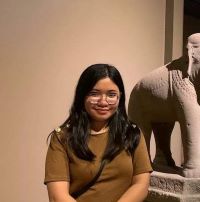When you think of Cambodia, it’s easy to think about its amazing temples and ancient ruins – especially Angkor Wat – along with its rich cultural heritage.
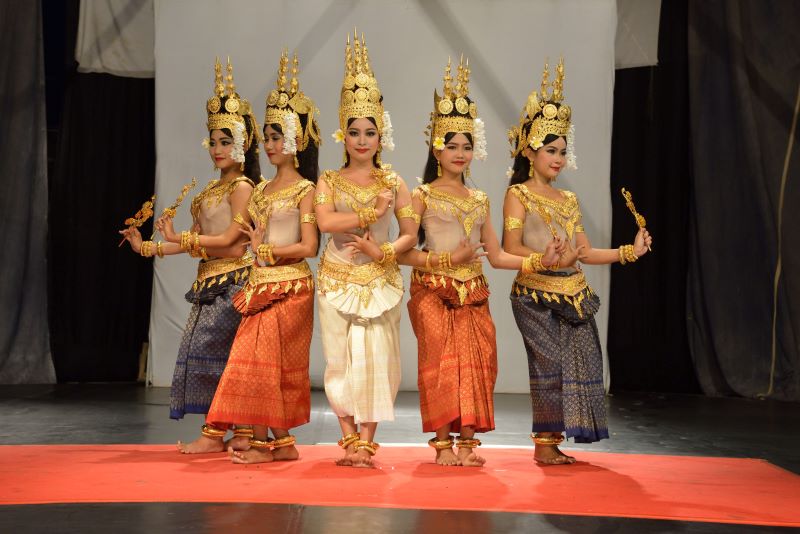
Khmer traditional dance is a key part of Cambodian arts and culture. In fact, the beauty and softness of different Khmer dance gestures are often one of the most common facets of Cambodian storytelling and cultural heritage that are represented to other nations. However, during the dark days of the Khmer Rouge, Cambodian traditional dances almost died out completely.
Today, there’s hope for traditional dance in Cambodia.
Founded 30 years ago by former refugees of the Khmer Rouge, Phare Ponleu Selpak cultivates a sense of Cambodian pride and identity through our dance program. The program is a central part of the entire performing arts curriculum and includes both modern and traditional dance.
How Phare Ponleu Selpak Helps Protect & Promote Khmer Traditional Dance
In a country where the artistic culture was destroyed through years of conflict, the founders of Phare Ponleu Selpak knew that rebuilding and restoring Cambodian cultural heritage – including Khmer dance – would be an imperative of their non-profit arts school.
“The dance program was created in 2014,” said KHOUN Det, founder of Phare Performing Arts School. “Back then, our young students needed to learn about Khmer traditional dance because audiences needed to discover and understand the core value of our beautiful culture along with our circus show.”
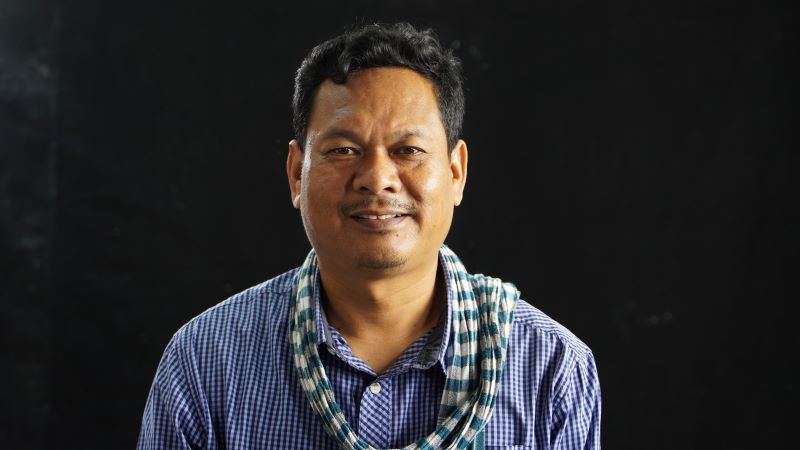
In 2014, the dance program was taught by Sopheavy Pich, a well-known dancer from Phnom Penh, and starting in 2019, the program has been taught by HANG Sela, who has almost 20 years of experience in Khmer traditional dance.
Types of Khmer Dance Taught at Phare Ponleu Selpak
There are many types of traditional dances in Cambodia, but the Phare Ponleu Selpak dance program focuses on two main types of Khmer dance: classical dances and local traditional dances.
Khmer Classical Dance
The first category, classical dance, was originally only performed in the royal palace back in Cambodia’s ancient past. These include:
- Khmer Royal Ballet Dance (Robarm Preah Reach Trob): What makes this dance special is how the body movement follows the characters in the story. For example, dancers move differently if they are portraying a giant, the male protagonist, the female protagonist, or others.
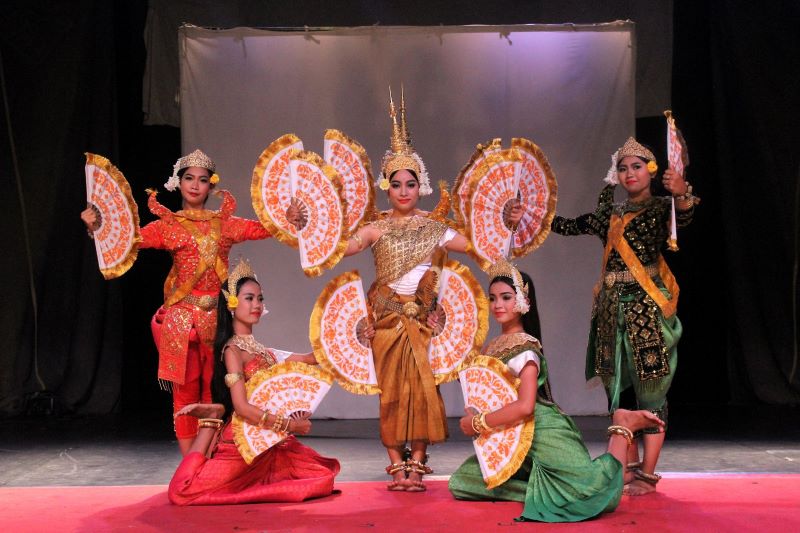
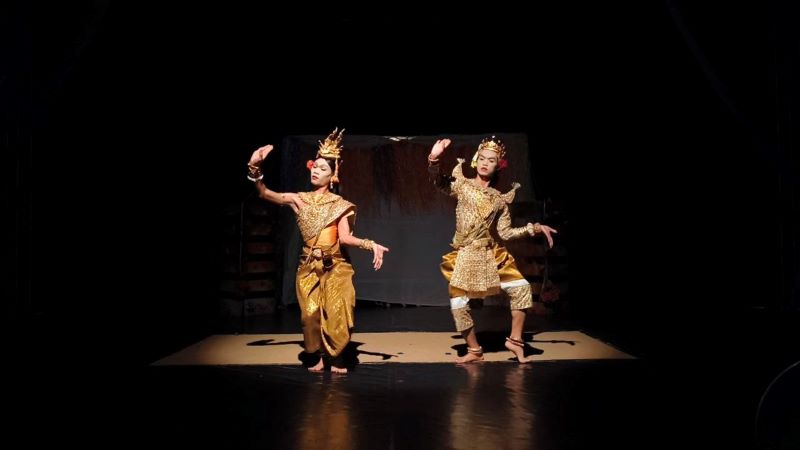
- One Hundred Years Dance: The unique style of this dance is how the dancers’ bodies are softer and lower. The dancers’ arms and legs are also open wider than other Khmer dance styles.
- Lakhon Khol Dance: In this traditional dance, most of the characters are wearing masks and even the female characters are danced by men.
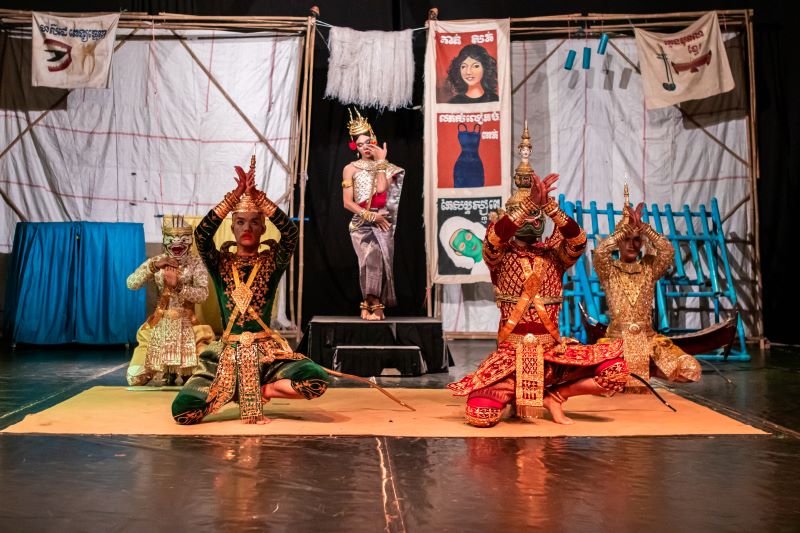
Khmer Local Traditional Dances
The second type of Khmer dance taught at Phare Ponleu Selpak is local traditional dances. These are more numerous and diverse. Some examples include:
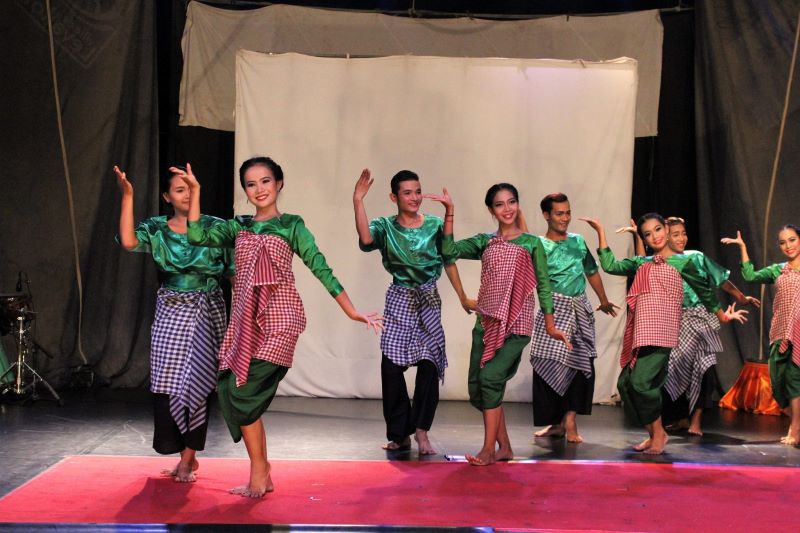
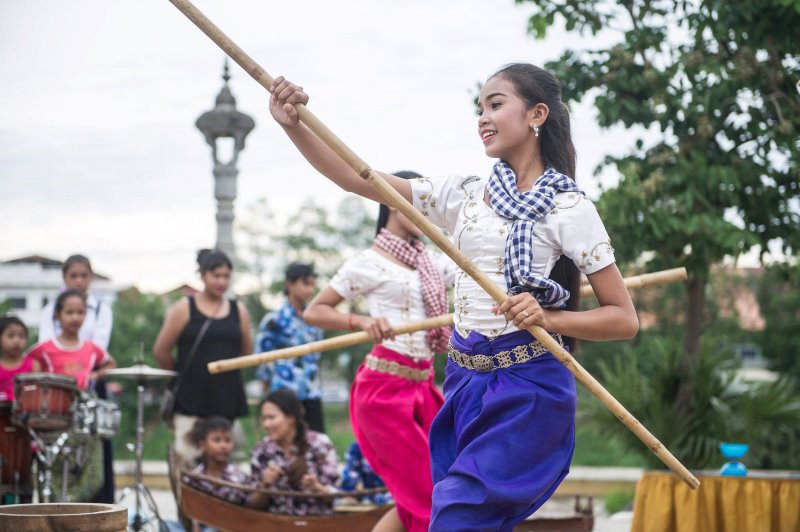
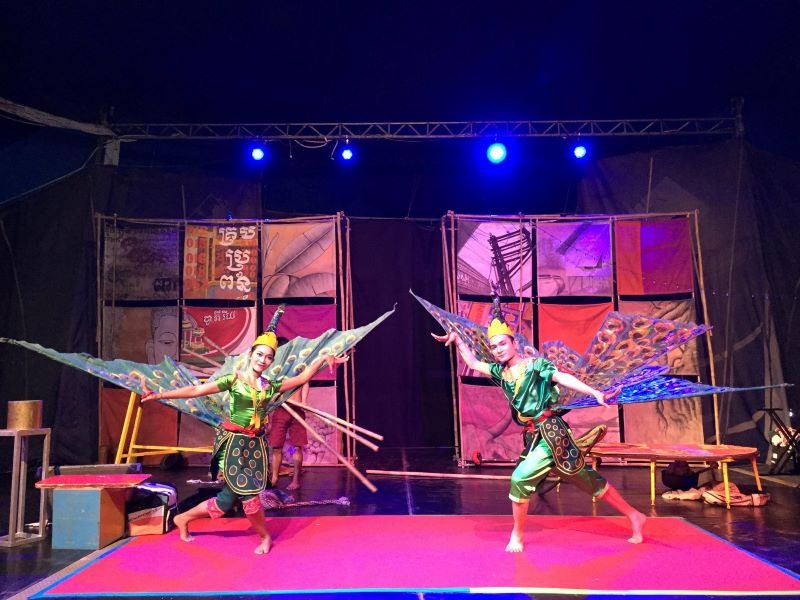
- Harvest dances: These dances celebrate the achievement of harvesting the rice each season.
- Coconut Shell dances: Originating in Romeas Hek district in Svay Rieng Province, this traditional dance is performed during wedding ceremonies, specifically for the groom procession, and during other festivals to add cheer to the atmosphere.
- Fishing dances: These highly spirited dances follow popular themes with lively movements and gestures. Dance motifs are usually based on local legends and the everyday life of the people.
- Peacock dances: There are two types of peacock dance style. First is the Pailin Peacock Dance, which is about the Pailinian legend of a magic peacock who goes to preach to the king. Second is the Pursat Peacock Dance. This dance originated from Pursat Province and is performed to celebrate the time of harvesting and picking cardamom, praying for the loss of cattle, or for getting lost on the path.
- Ploy Souy dances: This dance style originated from the Kouy ethnic minority.
And these are only just some of the traditional dances taught to students at Phare Ponleu Selpak! There are many more Khmer folk dances that Phare Performing Arts School is planning to teach students in the future.
The Impact of Teaching Traditional Dances within Cambodian Society
The biggest impact of the Phare Ponleu Selpak dance program has been to increase the number of professional dancers in Battambang and to enhance the public’s knowledge about Khmer dances, especially Battambangers.
Moreover, the traditional dance program brings opportunities to youngsters – especially female students – by giving them a chance to perform on special occasions in the province. These special events and occasions help develop their dance skills and build their confidence. The dance program has also played a role in helping our dance students find specific jobs.
“I feel delighted to work at Phare Ponleu Selpak and to share the knowledge of dances that I had learned from own professors back in the day,” said HANG Sela. “I am glad to have similar experiences with my students to help them understand clearly about Khmer dances.“

Today, the dance program has more than 60 students, including leisure classes, preparatory classes, and vocational classes. It will take a child around a year or two to master the fundamentals of dance before they can perform on stage. It typically takes adults just two or three months to pick up the basics and concentrate on learning the dances they will be performing publicly.
How You Can Change Student Lives through the Power of Dance
As with all of our arts programs, Phare Ponleu Selpak offers classes to students for free or at a highly subsidized rate (for those who able to contribute). Because so many students come from disadvantaged backgrounds or under-resourced communities, our dance school relies on outside contributions of finances or equipment in order to run smoothly.
Furthermore, to provide our students with fresh experiences that will enhance their dancing abilities, the dance school is always looking for volunteer dance instructors to share their expertise with them.
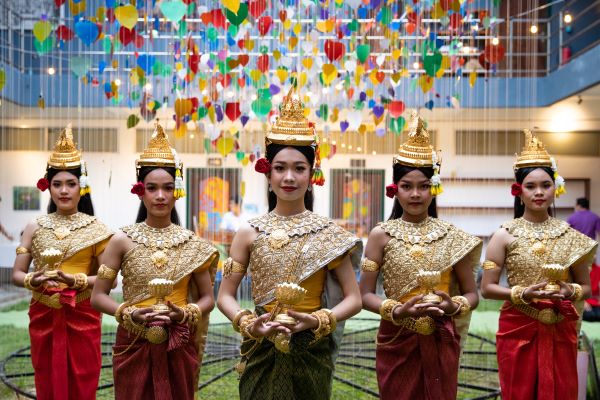
Conclusion
We believe that all children and young adults, regardless of their background, deserve to have access to education and to the healing power of the arts.
Through this dance program, which is an essential part of Phare Ponleu Selpak, we believe that all students have the potential to enter the professional performing arts industry where they can earn an income to support themselves and their families. Your contribution helps provide art programs and professional skills training that leads to lasting employment opportunities for youth in Cambodia.
Help rebuild the cultural pride of Cambodia: Contribute to Phare Ponleu Selpak and change the lives of Cambodian children and youth through the power of dance and the arts.
***
